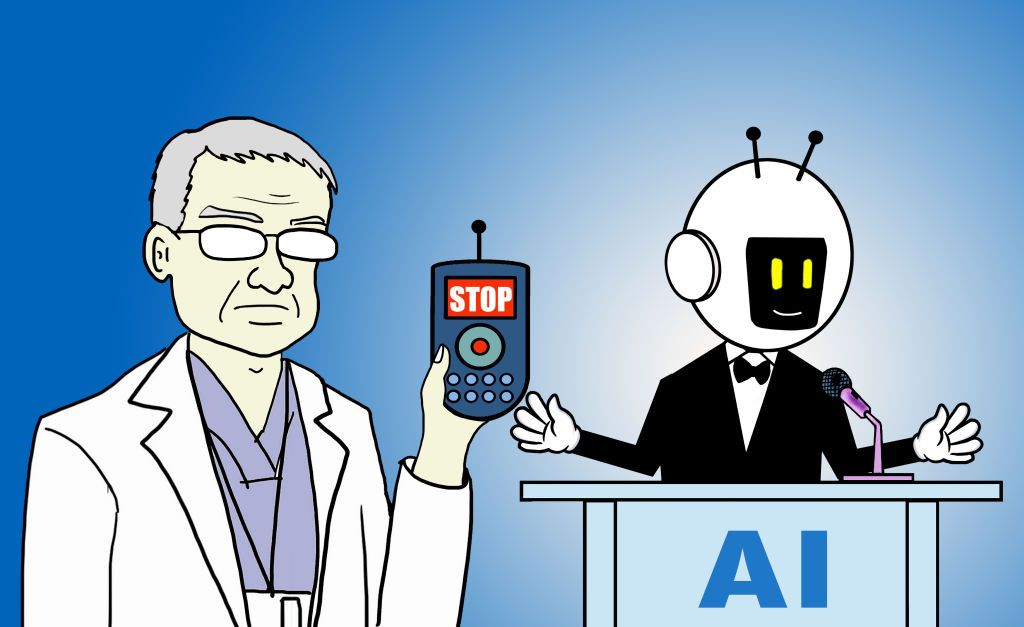
Can artificial intelligence (AI) truly read your mind? This seemingly impossible feat is at the forefront of cutting-edge research, stirring both excitement and concern. AI’s capacity to analyze vast amounts of data and identify patterns has led to remarkable advancements in various fields, including language translation, image recognition, and medical diagnosis. However, the ability to interpret subjective human experiences remains a significant hurdle. This article will explore the limitations of current AI technology in deciphering thoughts and delve into the underlying reasons why ‘mind-reading’ AI is still science fiction, rather than a present reality. We will explore the challenges of understanding human thought processes, the ethical implications of such technology, and potential future directions of research in this exciting field.
The Impossibility of Mind-Reading AI
Understanding the limitations
Despite significant advancements in the field of artificial intelligence, the ability to truly interpret human thoughts and emotions using AI remains elusive. While AI excels at analyzing patterns and predicting outcomes based on input data, understanding the complex interplay of neurological processes and subjective experiences presents insurmountable obstacles. AI lacks the nuanced capacity to grasp the emotional context, motivations, and personal histories that influence human thought.
The Science of the Brain
Unraveling human thought processes
Understanding human thoughts involves intricate neural networks and cognitive processes. These processes are shaped by personal histories, emotions, and cultural contexts. It’s this intricate tapestry of variables that makes replicating genuine human understanding an almost impossible task for current AI technology. To truly read minds, AI would need an extraordinarily detailed understanding of the human brain, surpassing what is presently available and posing immense challenges from both a scientific and ethical perspective.
Current AI Limitations
Current technical capabilities and their limits
Current AI models, predominantly based on machine learning algorithms, excel at pattern recognition. However, these algorithms rely on vast datasets to establish correlations between inputs and outputs. While this method can identify patterns, it doesn’t inherently understand the meaning behind them. A fundamental aspect of true mind reading is understanding context and intent, which AI lacks. This means the output of an AI can be misconstrued, producing inaccurate or misleading conclusions.
Ethical Implications
Potential dangers and responsibility
The development of mind-reading AI raises significant ethical concerns. The potential misuse of such technology, including unauthorized surveillance or manipulation, is a real concern. Privacy is paramount. The need for regulations to prevent the misuse of mind-reading AI is critical for safeguarding individual rights and ensuring responsible innovation.
Future Directions
Exploring alternative approaches and research
While immediate “mind reading” by AI is unlikely, the field of AI continues to advance. Research is ongoing into understanding and replicating human cognition. The potential for brain-computer interfaces and similar technologies may pave the way for more subtle interactions between humans and machines, potentially leading to novel applications in areas like healthcare and assistive technologies. However, ethical frameworks must be developed alongside these advancements. The ethical and societal implications of these technologies must be rigorously assessed before full deployment.
Frequently Asked Questions
Q1: Can AI ever truly read minds?
Unfortunately, no. Current AI technology cannot decode complex human thought processes. While it can identify patterns and correlations, it lacks the nuanced understanding of human emotions, motivations, and contexts required for true mind reading. Advanced machine learning algorithms may provide insights into brain activity, but accurately interpreting those signals as genuine thoughts is beyond current capabilities.
Q2: What are the ethical implications of mind-reading AI?
The development and deployment of mind-reading AI pose substantial ethical challenges. Privacy concerns are paramount, as such technology could potentially be used for unauthorized surveillance or manipulation. It is crucial to develop robust ethical guidelines and regulations to prevent misuse, ensure data security, and respect individual autonomy. These safeguards are critical for promoting responsible innovation in the field.
In conclusion, while AI is rapidly advancing in understanding and interpreting human behavior, “reading minds” remains a significant challenge and a topic of ongoing research. The complex interplay of thought processes, emotions, and social contexts makes it highly improbable for AI to replicate genuine human empathy or intuition anytime soon. If you’re interested in exploring the future of AI and its potential applications, I encourage you to delve deeper into relevant research and resources, including academic papers and industry reports. Stay updated on the latest advancements and engage in ongoing discussions about ethical considerations surrounding this transformative technology. By understanding the limitations and possibilities of AI, we can collectively shape its future in responsible and impactful ways.